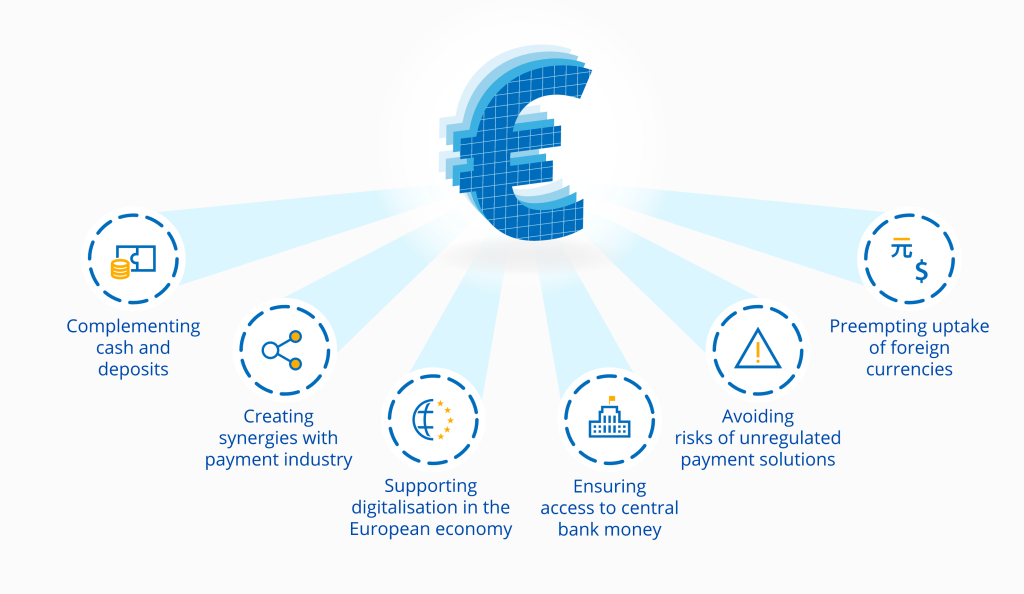
The European Central Bank (ECB) has just released a new report detailing the measures in which its investigation into the potential introduction of a digital euro has progressed. The investigation will continue the next year, and the regulatory body anticipates making a judgment regarding whether or not to move through with the accomplishment of the project in the fall of 2023.
The release of a second report on the progress of the research phase of the initiative to issue a digital version of the common European currency by the central bank of the eurozone is the latest step in the project. This document outlines a set of design and distribution choices, which were recently adopted by its Governing Council. Additionally, it defines the duties of the ECB as well as key stakeholders in the ecosystem of the digital euro.
The ECB stated: “ In the remainder of the investigation phase, work will continue on assessing a number of design and distribution options for a digital euro, including advanced functionalities for digital euro payments, and additional aspects of the digital euro distribution model. The investigation phase also includes a prototyping exercise to test how well potential back-end solutions developed by the Eurosystem could be integrated with front-end prototypes. The prototyping exercise is expected to be completed in the first quarter of 2023 when the ECB will also publish its findings.”
Developing Rules for Digital Euro Distribution
In the same way, as physical banknotes are a liability on the balance sheet of the Eurosystem, which is the monetary authority of the eurozone and comprises the ECB and the national central banks of the member states, a digital version of the euro would also be a liability. The regulator explains that as a result, the Eurosystem needs to have complete control over the process of issuing and settling digital euro transactions.
End users, which include individuals, merchants, and businesses, will receive the digital euro through supervised intermediaries, which include credit institutions and payment service providers. These intermediaries will also open digital euro wallets, process payments, and provide other services related to the digital euro. In addition to that, it will be their responsibility to perform checks to prevent money laundering and to conduct know-your-customer procedures.

The ECB further explained: “Paying in digital euro should always be an option, irrespective of the entity with which end users open digital euro accounts or wallets and of their country of origin. Against this background, this report describes a digital euro scheme for the distribution of the digital euro. A digital euro scheme appears to be the best option for ensuring that everyone in the euro area could pay and be paid in digital euro and for achieving the objectives of a digital euro as a monetary anchor, securing its strategic autonomy and economic efficiency.”
In addition, the European Central Bank has provided assurances that the design of the digital euro would reduce the ECB’s role in the processing of user data. According to the explanation provided by the monetary authority, the Eurosystem will not be able to deduce how much digital euro each given end-user has nor would it be capable of deducing end users’ payment patterns.
In 2021, the investigative stage of the initiative to create a digital version of the euro got underway. In September 2022, the ECB published its very first progress report. It is anticipated that work on a rulebook for the distribution plan would start in the month of January. According to the release, the Governing Council of the central bank will assess the findings of the research in the fall of 2023 and make a decision regarding whether or not to move to the realization phase.








